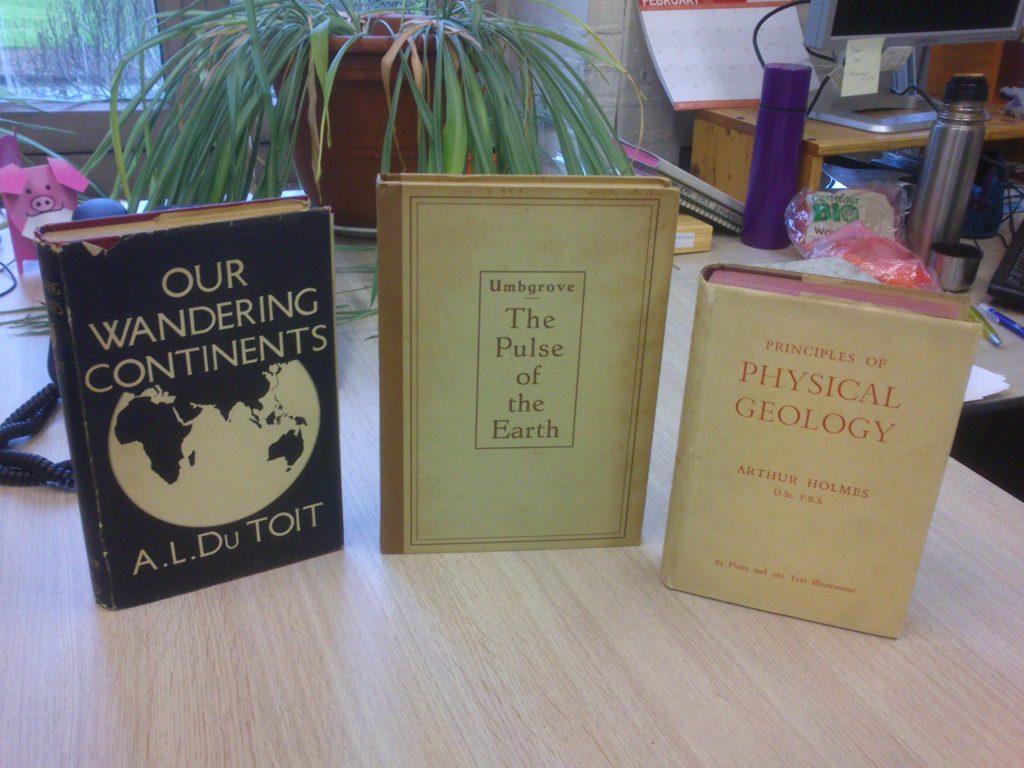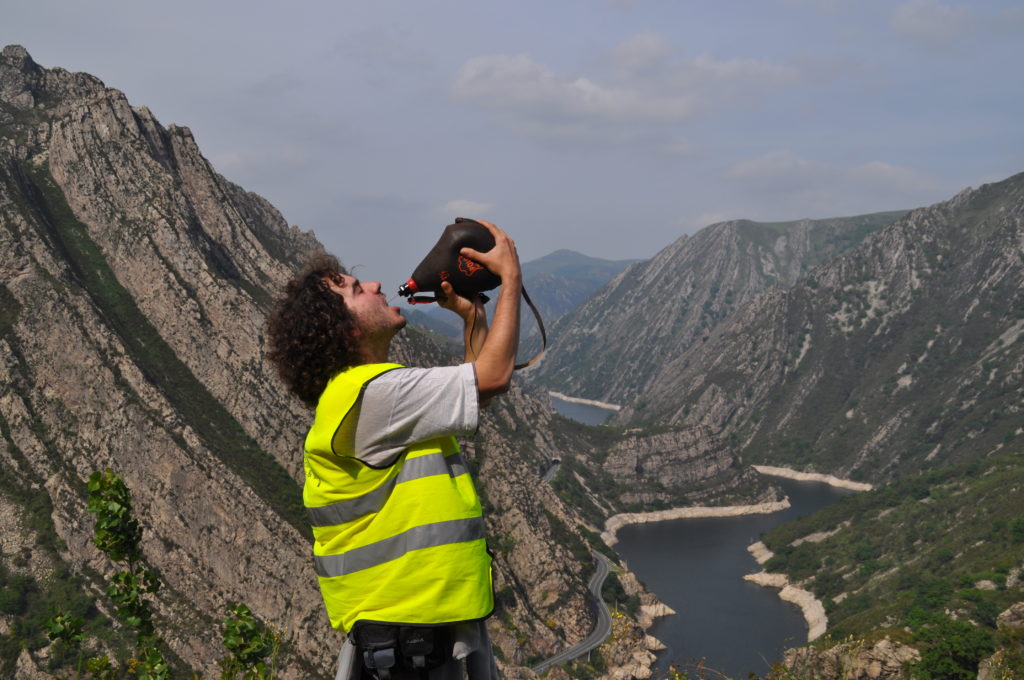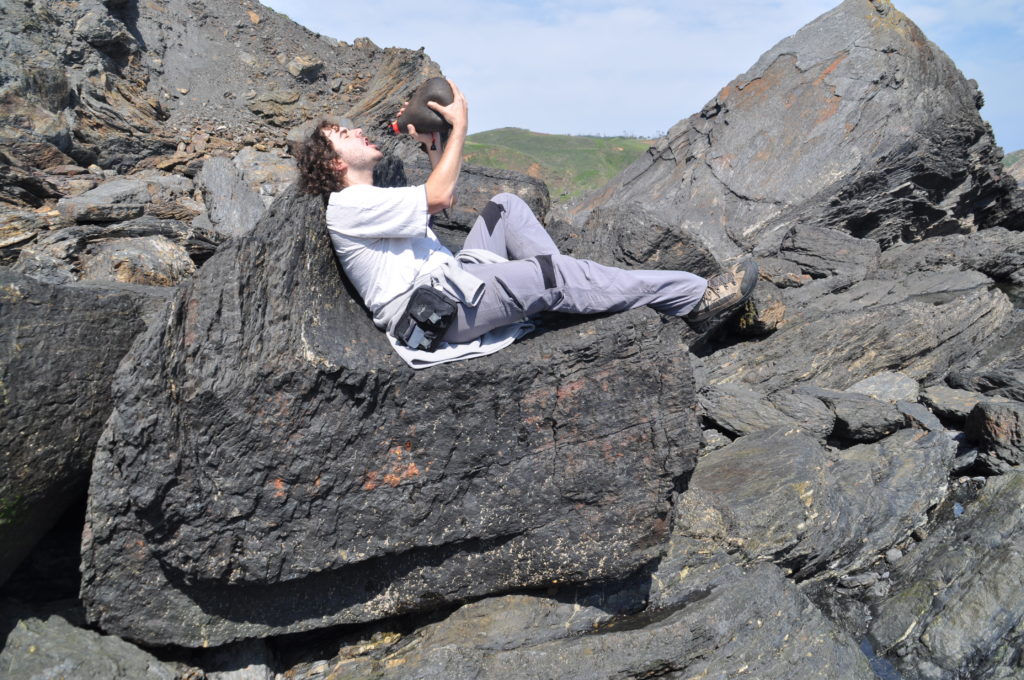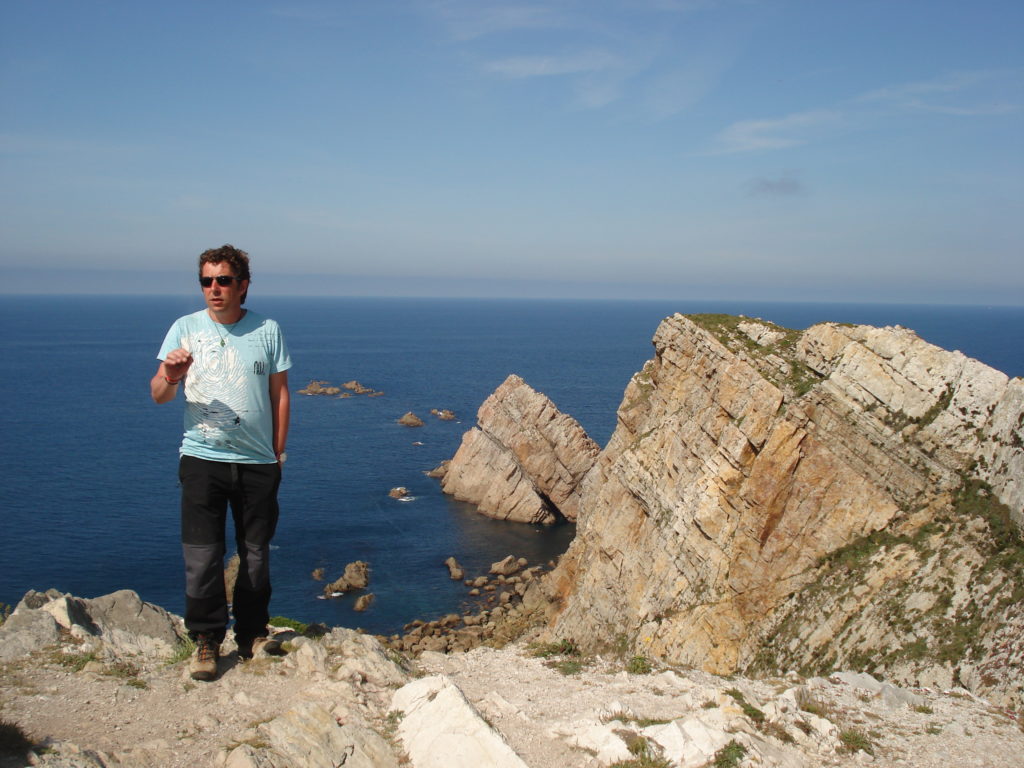Daniel Pastor-Galán is a geologist interested in plate tectonics in general. His research focuses in formation of mountain belts and global tectonic and geodynamic evolution of the Earth. He is especially interested in the formation of oroclines, which are map scale curvature in mountain belts and in the formation and evolution of supercontinents. He tries to get answers using a variety of techniques: structural geology, paleomagnetism, thermochronology, isotope geology and modeling. You can read more about his research here.
It was a rainy day in northwest Iberia, some time in 2008… Well, I do not really remember, but it had to be rainy, the usual thing in a place with more than 70 ways to say “to rain”. For many Iberia and raining is an oxymoron, but doing fieldwork in the northwest means learning to writ with the notebook upside down, or paying 16 bucks for a Rite in the Rain. Besides the rain, northwest Iberia is the best place on Earth to do fieldwork if you are a foodie. With more than 50 different kind of cheese, great seafood, great meat, great vegetables and great cooks. And, too, and no less important, it has great rocks.
At that time, I was starting PhD at the Universidad de Salamanca, working in a research project called “ODRE” (acronym for Oroclines Delamination Relationships and Effects) which in Spanish means “large wineskin” with Gabriel Gutiérrez-Alonso (my PhD advisor), Arlo Weil and Steven Johnston, a.k.a The Orocline team. Obviously, my PhD was on oroclines. An orocline is a curved mountain belt (from Greek oros, mountain: and clinos, curved). My thesis focused on the kinematic and geodynamic evolution of the Cantabrian Orocline. The Cantabrian Orocline, my frenemy, we got the best and worst times during four years. I have a collection of old books that mention or show it in a figure, yes I am a bit weirdo, just a bit. And here, I am going to tell something about it, and of course, I am going to show some great rocks around.
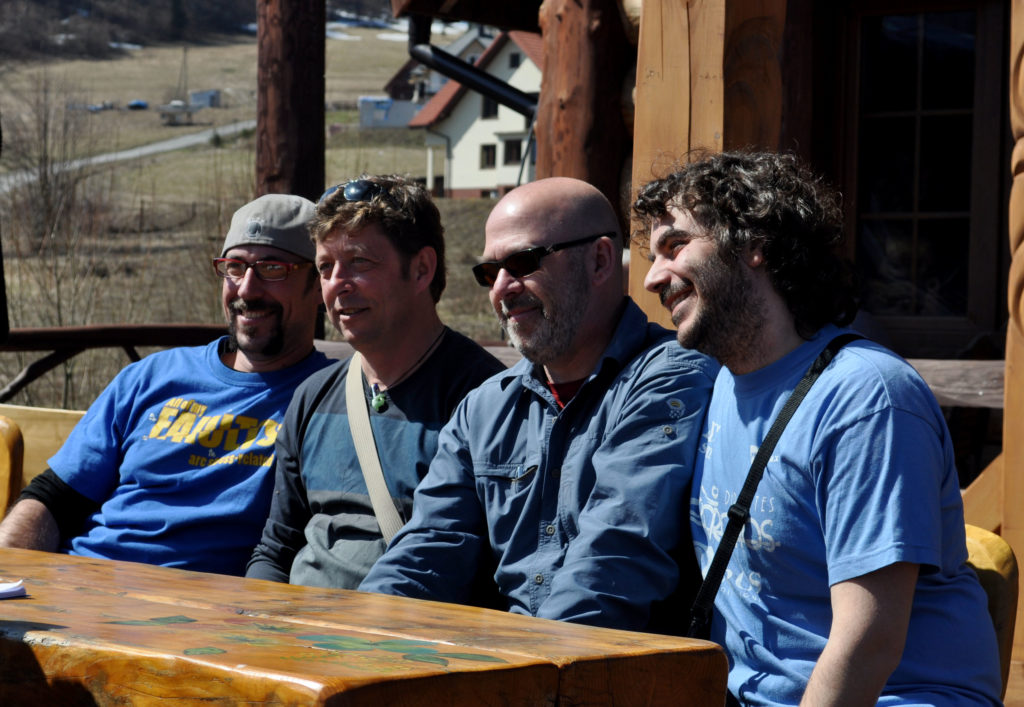
The Orocline team, from left to right: Arlo Weil, Gabriel Gutiérrez-Alonso, Stephen Johnston and me.
In short -because what you want is see photos- the collision between Gondwana and Laurussia the Variscan-Appalachian orogens formed in present day Europe and North America respectively. Just after it, in the late Carboniferous, the mountain belt buckled around a vertical axis in what it is now Iberia. This process happened in a very short period of 10 million years. We constrained the kinematic movement of the Cantabrian Orocline using structural geology, paleomagnetism and geochronology. Diachronously -I love this word- large amounts of magmatism intruded the Iberian peninsula. Those rocks, show a particular Nd signature telling us that its mantle extraction age is the same as its true age. The Orocline team concluded that both processes were linked: buckling the entire lithosphere would have created a thick lithospheric root beneath it, that would be gravitationally unstable and, finally would drip or delaminated, producing the particular post kinematic magmatism of Iberia. You can see a synthesis of the process in two animations I did for my PhD (here and here)

My first day of field work during my PhD. Stephen Johnston points out the unconformity between Kasimovian (~300 million years ago) and Ediacaran rocks (~600 Ma). There is as long between this two rocks as between the youngest and us. It was not rainy, after all.
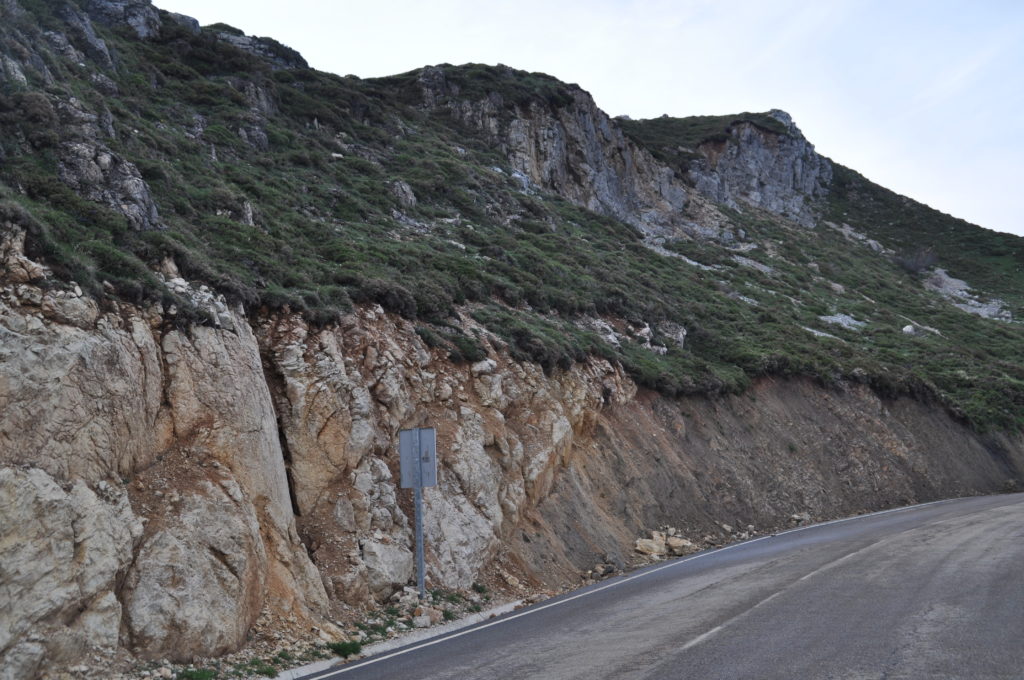
Cambrian (white limestone) over Carboniferous (grey sandstone). Nice thrust, just there, in the middle of the road.
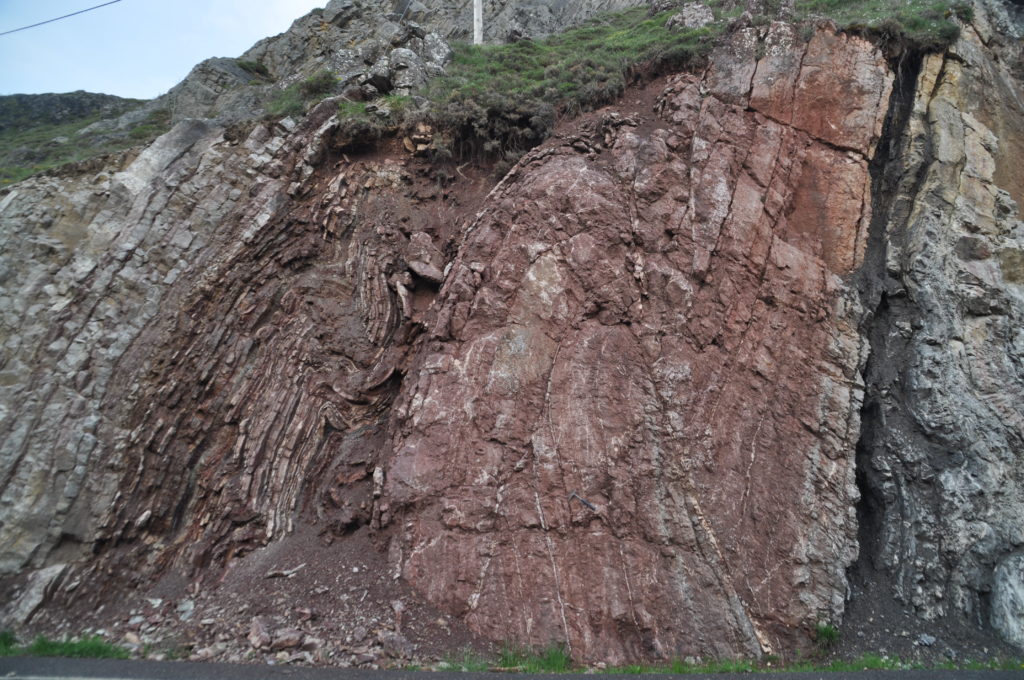
Carboniferous limestone fault propagation fold. Thrusts, folds, limestones and radiolarites dancing around. Nice party.
Since the last time I went there it has been almost 4 years. The Cantabrian Orocline is not my frenemy anymore, it is just a very good old friend I want to visit, but I can’t find the time to do it. I have done fieldwork in many other spots on Earth, but none of them are a piece of me. And of course, in none of them you could eat that good.
![]() This work is licensed under a Creative Commons Attribution-NonCommercial-ShareAlike 4.0 International License.
This work is licensed under a Creative Commons Attribution-NonCommercial-ShareAlike 4.0 International License.

